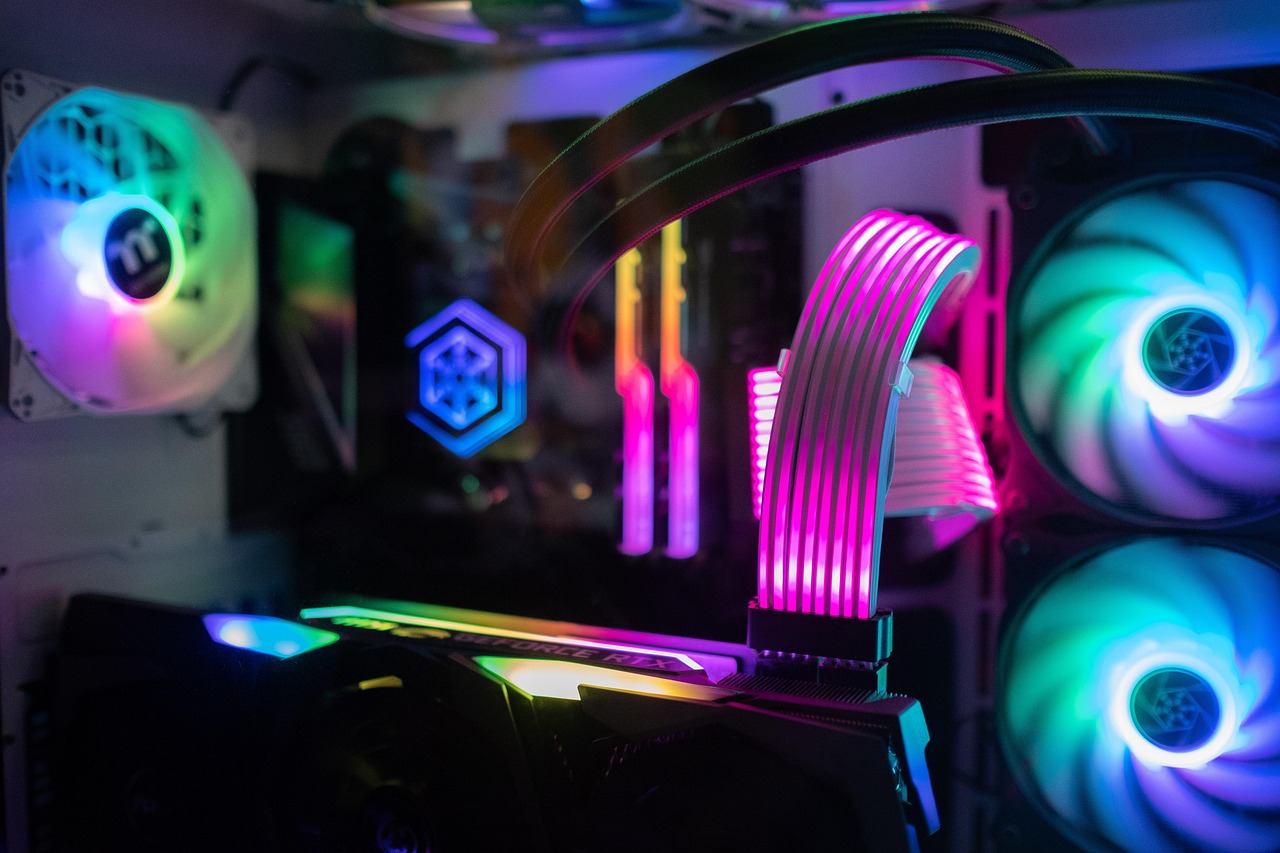Gaming gear is the collection of hardware and peripherals that shape how you play, perform, and feel at your rig. It’s not just toys on a desk. The right upgrades change your screen clarity, your reaction time, and how long your body and focus last through a long session. This guide walks you through the 7 best gaming gear upgrades for every budget, with smart buys, expert-backed reasons, and practical tips that won’t waste a cent.
Contents
- Gaming Gear Priority: Your Monitor First
- Upgrade Your Mouse: Precision Changes Outcomes
- Upgrade Your Keyboard: Speed, Feel, And Feedback
- Upgrade Your Headset: Hear What Others Don’t
- Upgrade Your Chair And Desk: Comfort Is Performance
- Upgrade Your Network: Less Lag, More Wins
- Upgrade Your Storage And Load Times: Faster Start, Less Waiting
- How To Choose Smartly For Your Budget
- Maintenance And Setup Tips To Extend Value
- Bottom Line
- FAQ
Gaming Gear Priority: Your Monitor First
A great monitor is the fastest path to better play. It’s where frames become crisp, motion becomes readable, and your aim stops guessing. If you can see an enemy one frame sooner, you win. Science backs visual benefit: studies on reaction time and display latency show smoother, higher-refresh displays reduce perceptual lag and improve response speed.
Budget path: a 1080p, 144Hz IPS panel gives sharp colors and low input lag without breaking the bank. Mid-range path: step to 1440p at 144–165Hz for clarity plus competitive smoothness. Splurge path: 240Hz or ultrawide 3440×1440 for cinematic depth and pro-level tracking. Pair a new monitor with a GPU-tested refresh strategy from manufacturers like NVIDIA so you aren’t bottlenecking performance.
Upgrade Your Mouse: Precision Changes Outcomes
Your mouse is an extension of your body. Comfort and sensor accuracy are not optional. If your aim drifts, the problem is rarely your brain. It’s often poor polling, jittery sensors, or a shape that fights your hand.
Look for these features:
- A proven optical sensor with adjustable DPI and reliable tracking.
- Comfortable ergonomics that match your grip style.
- Durable switches rated for tens of millions of clicks.
Low-cost wins: a wired mouse with a solid sensor gives the best value. Mid-tier: add lightweight builds and programmable buttons. High-end: wireless top-of-the-line mice match wired latency and free you from cable drag. Reviews from trusted testing labs like Rtings and PC Gamer highlight models that perform consistently in lab conditions.
Upgrade Your Keyboard: Speed, Feel, And Feedback
The keyboard is how you communicate with your game. Good switches give crisp feedback; bad switches add frustration and missed inputs. Tactile keys improve muscle memory and reduce errors. Ergonomic layout and programmable keys let you shift complex macros into one press, shaving seconds off critical maneuvers.
Budget suggestions: mechanical switch alternatives that still give satisfying feedback. Midrange: hot-swappable mechanical keyboards so you can tailor switches and feel. Luxury: low-latency wireless or robust aluminum frames with full customization software. Industry experts in human-computer interaction emphasize the advantage of tactile feedback for sustained precision.
Upgrade Your Headset: Hear What Others Don’t
Sound tells you where bullets come from and whether a player is sneaking. A directional, clear headset improves spatial awareness dramatically. Good audio separates the nearest footsteps from distant gunfire, and a clean microphone keeps your team communication crisp.
On a budget: closed-back headsets with passive noise isolation do the job. Mid-level: surround sound or virtual 3D audio improves positional cues. Premium: dedicated DACs and higher-impedance drivers create a richer soundstage and clearer chat. Tech write-ups from audio labs and sound engineers explain how frequency response and driver size impact perceived directionality.
Upgrade Your Chair And Desk: Comfort Is Performance
You can’t perform well if you’re in pain. Ergonomics isn’t a luxury — it’s a productivity tool. Studies on posture and repetitive strain show that proper back support, seat height, and desk ergonomics reduce fatigue and improve sustained focus.
Start affordable: a supportive office chair with lumbar adjustment and a stable desk. Mid-tier: ergonomically designed gaming chairs and standing desks that change posture. Premium: tailored seating with adjustable lumbar, armrests, and tilt mechanisms. Simple adjustments—monitor height at eye level, keyboard position to keep forearms parallel—save you from pain that kills practice time.
Upgrade Your Network: Less Lag, More Wins
Latency is invisible yet ruinous. A fast frame rate is wasted if your packets take a scenic route. Improving your network is one of the highest-ROI upgrades for competitive play.
First steps: wired Ethernet over Wi‑Fi whenever possible. Optimize your router settings and prioritize traffic for gaming via QoS. If you must use Wi‑Fi, get a dual-band router with 5GHz support. For streaming and multiplayer, consider a network card or mesh Wi‑Fi to reduce jitter. Network engineers recommend lowering jitter and packet loss before pushing higher FPS because consistency matters more than raw speed.
Upgrade Your Storage And Load Times: Faster Start, Less Waiting
Nothing kills momentum like loading screens and texture pop-in. Upgrading from a mechanical drive to an NVMe SSD is one of the most tangible quality-of-life changes you can make. Games load faster, textures stream in quicker, and level transitions feel seamless.
Budget: a SATA SSD for faster boot and load times. Midrange: NVMe drives for superior throughput and reduced stutter. High-end: high-capacity NVMe with heatsinks for bursts of sustained performance in open-world titles. Hardware review sites and storage benchmarks consistently show NVMe drives offering dramatic improvements over HDDs for gaming workloads.
How To Choose Smartly For Your Budget
Define the outcome you want before the buy. Do you want raw performance, comfort, or longevity? That answer tells you where to spend.
Plan like this:
- If you’re on a tight budget: fix the chokepoints first. Replace an HDD with an SSD, upgrade to a decent monitor, and get a reliable mouse.
- If you have moderate funds: balance display, input, and audio upgrades for overall gains.
- If you can splurge: prioritize a top-tier monitor, wireless pro‑level peripherals, and ergonomic furniture.
Spend where you feel the most friction. If you miss shots, invest in input devices. If you can’t see enemies, upgrade your display and GPU. This is practical advice echoed by pro players and hardware analysts.
Maintenance And Setup Tips To Extend Value
A good setup stays that way with a few habits. Clean gear, optimized drivers, and correct posture extend both lifespan and performance.
Routine tasks:
- Clean mechanical parts and mouse feet monthly.
- Update firmware for mice, keyboards, and monitors.
- Calibrate monitor color and brightness to reduce eye strain.
- Keep drivers updated for your GPU and network stack.
Small, consistent maintenance protects your investment and keeps your gaming experience tight and reliable.
Bottom Line
The right gaming gear upgrades give you immediate, tangible improvements. Focus on the bottleneck that hurts your play. Swap an HDD for an NVMe, get a monitor that matches your GPU, and choose input devices that fit your hands. These upgrades pay back in wins, joy, and fewer sore backs. Start with comfort and visibility, then tune for precision and connectivity. You’ll feel the difference every time you sit down.
Be bold about upgrades. They’re not indulgences; they’re tools to sharpen your time and talent.
FAQ
Which Gaming Gear Should I Upgrade First If I’m On A Tight Budget?
Start with storage and the display. An SSD cuts load times dramatically, and a 144Hz 1080p monitor improves clarity and responsiveness. These two changes are cost-effective and deliver measurable in-game improvements.
Do Wireless Peripherals Impact Performance?
Modern wireless tech has closed the gap. High-quality wireless mice and keyboards now match wired latency in lab tests. Choose models with trusted low-latency modes and tested battery life. For absolute pro setups, some still prefer wired for zero-variance, but wireless is excellent for most players.
How Important Is Ergonomics Compared To Pure Performance?
Ergonomics matters as much as performance over long sessions. Good posture and a supportive chair preserve your health and consistency. Investing in ergonomics prevents pain that can derail practice and performance.
Will A Better Monitor Make A Big Difference If My GPU Is Older?
Only to a point. A high-refresh monitor reveals more only if your GPU can push frames. Match your monitor to your GPU’s capabilities. If your GPU is older, choose a monitor that balances resolution and refresh rate to avoid bottlenecks.
Are Expensive Headsets Worth It For Multiplayer?
If sound positioning and voice clarity matter to you, yes. Mid-tier headsets with good drivers give most players a big advantage. Pro audio gear improves immersion and communication but prioritize clear mic pickup and positional accuracy first.
———
References
Rtings provides in-depth testing and comparative reviews for monitors, mice, and audio gear that illustrate performance differences among models (http://www.rtings.com).
PC Gamer covers expert gear recommendations and hands-on reviews that explain how peripherals impact gameplay for various budgets (http://www.pcgamer.com).
A PubMed review on display latency and human reaction time explains the perceptual effects of refresh rate and input lag in visual tasks (http://www.ncbi.nlm.nih.gov).
Logitech’s research pages outline how ergonomic design and switch durability affect performance and long-term comfort (http://www.logitech.com).








